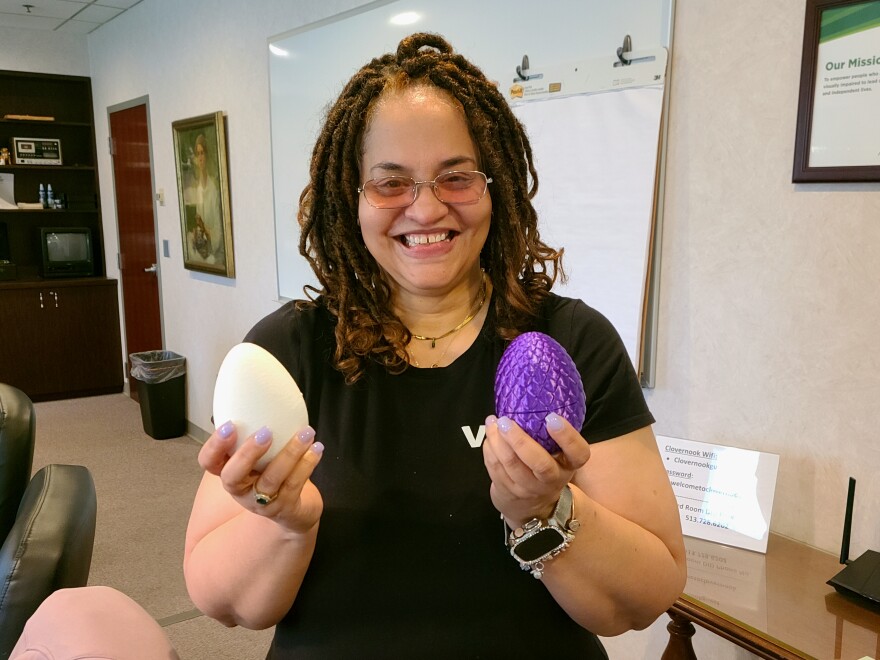You've probably participated in an egg hunt, or Easter egg hunt, at some point in your life. This time of year, they're all over the place at churches and community events. However, children who are blind or visually impaired are frequently left on the sidelines during these events, or struggle to enjoy the activity as much as their sighted counterparts.
Until now.

Clovernook Center for the Blind & Visually Impaired is bringing a technology its been refining in Memphis to the Tri-State.
"Typical egg hunts require that you look at the eggs; you use vision to find them. We have created eggs that will emit an audible sound — they beep — so that children with visual impairments can go out and find them easily," explains Stephanie Jones, technology and accessibility coordinator for Clovernook. "They're not relying on their sight; they get to use their ears to find the eggs."
The idea came from an unusual source. Jones reports the original set of beeping eggs was created by a bomb squad from Memphis, Tennessee. The squad had read about other beeping egg hunts across the country and reached out to Clovernook's Memphis office offering to help figure out how to make a set of beeping eggs for use there.
How beeping eggs work
Jones says the event was a success and Clovernook began expanding, offering hunts in other cities. Now, the agency even uses 3D printers, she says, to make new eggs. They're also trying to figure out how to create the beeping components and wiring themselves.
"We're looking at ways [we can] even take it a step further. How could we have light come from the egg for someone that might have a little bit of sight, so they could find them that way; or how could they rattle for someone that is deaf-blind?" Jones queries. "We're trying to find new ways to make it even bigger and better for everybody."

Clovernook currently has around 50 eggs. Jones says each egg costs about $20. The eggs are around 6 inches tall. Some are crafted from a traditional plastic egg; some have been 3D printed to be textured or have a scalloped pattern.
"Then they have a switch so that when you find it, you turn it off and put it in your basket. Then [participants] turn them in for a goodie bag," says Jones.
Inside each egg is a battery pack and the components that emit the beeping sound. Holes are punched into each egg to allow the sound to be heard loudly and clearly.
"They're all emitting the same frequency. It's like a field of crickets out there chirping all at once. They'll kind of sound like they're in chorus of each other," she explains. "Then once you find the egg, you turn it off, so then the field starts to get a little bit quieter, and you can home in on those last few eggs that are still out there."
'All I had to do was listen'
You can hear the excitement in her voice when Jones speaks about the egg hunt. It's a highly personal event for her.
"As an individual who lost their own sight — as an individual with blindness myself — it's a personal and a professional journey," she says, smiling. "This is my baby. I love these."
She loves the excitement she hears from participants and family members, too. She recalls talking with a little boy at a recent hunt.
"He said, 'This was the easiest hunt I ever had.' And I said, why? He said, 'Because I didn't have to look for the eggs. All I had to do was listen for them.' "
Last year, a participant and her family traveled three hours to join in on the fun.
"She said at a typical hunt, she never finds eggs. You could hear the laughter in her voice as she held up her basket and said, 'but now I found lots of them.' "

This year, Clovernook is producing egg hunts in at least six cities across three states.
Jones says no one is excluded.
"We will have a range — children, adults — and the neat thing about it is we don't exclude siblings. So if someone is sighted, if it's a parent that's sighted, we use sleep shades so that they can experience the hunt as well," she says.
Read more:



